Overall: 4 out of 5
Optics: 4.5
Price: $1099 USD New, ~$600 USD Used
Value: 4.5
Note: Many of these photos originally appeared in my "Weekend with the 80–200mm f/2.8 AF D" series. All pictures were taken over Labor Day weekend, 2009. For more photos and reading, I’ve linked to the other posts at the end of the review.
Nikon still makes this holdout from the 90s as a cheap alternative to the 70–200mm f/2.8 AFS VR. At slightly over half the price of the new model, it’s certainly a better value.
Nikkor 80–200mm AF f/2.8D ED
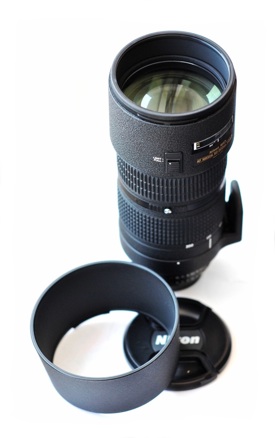 Taken with Nikon 85mm f/1.4 AIS
Taken with Nikon 85mm f/1.4 AIS
Assorted Information
|
Max Aperture
|
f/2.8
|
|
Min Aperture
|
f/22
|
|
Aperture Blades
|
9
|
|
Close Focus
|
1.5m/4.9ft
|
|
Filter Thread
|
77mm
|
|
Hard Infinity Stop?
|
No
|
|
Built in Hood?
|
No
|
|
Hood Model #
|
HB-7
|
|
Autofocus Type
|
Screw
|
|
Manual AF Override
|
No
|
|
ED Glass
|
Yes, 3 Elements
|
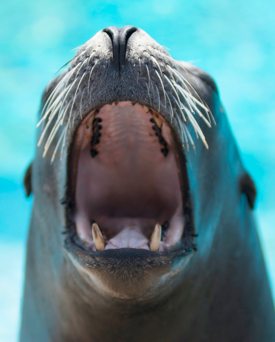
Image Quality
Image Quality is excellent. I have not used the 70-200mm AF-S, but I have used the Canon 70–200mm f/2.8L IS USM and have seen nothing that would suggest this lens is optically inferior. There’s a little chromatic aberration wide open, but nothing too significant. It’s sharp through at least f/8, but I haven’t shot it past f/8 at all yet, so can’t comment beyond that.
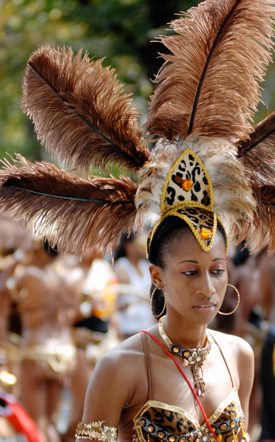
Operation
The real tradeoffs vs. the 70–200mm AF-S are operational. There are 2 major losses going from AF-S to AF, one being that you cannot manually override the autofocus by simply grabbing the focus ring, you must turn a ring to switch to MF. The second loss going to the old screw-style AF is in focusing speed. If the AF-S version focuses anything like the aforementioned Canon, it’s about 2x faster than this lens on my D200 (it may be faster/slower on other bodies depending on the strength of the motor). If you’re shooting sports, this could be a deal breaker, but for virtually anything else, this lens snaps into focus more than quickly enough. If you aren’t travelling through a large portion of the focus range, there is little functional difference between this autofocus speed and the Canon USM.
Aside from the downgrade in autofocus, you also lose Nikon’s VR II by choosing this lens over the AF-S. Nikon says it can let you shoot 3 stops lower than without, and I’d believe it. I’ve seen Nikon’s VR help by 2 stops on cheaper lenses. If you’re doing indoor available light portraits — like weddings — it’s a big advantage to the new design.
This lens does have a couple advantages versus its more expensive kin. It’s 170 grams/.4 pounds lighter, which can make a big difference carrying it around all day. The tripod collar also seems sturdier and doesn’t get as much in the way when handholding, though the newer version’s can be removed and attached very easily.
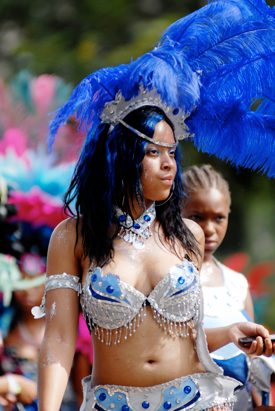
The focus ring travels about ⅓ of the way around the barrel from close focus at 1.5m/4.9ft to infinity. I would like to see it go at least ½ way around for easier precision focusing, but that’s the way AF lenses are made. The grip for both focusing and zoom rings is rubbery and solid, and turning is smooth. It’s not as nice as what you’ll see on almost any MF lens, but not bad either.
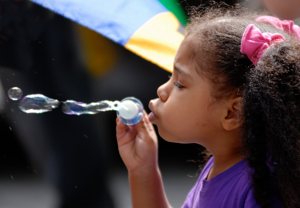
Final Word
This is a great lens. It does things right where it counts (the optics) and much more affordably than the AF-S version. It’s a great portrait lens with some minor caveats. At $1099 USD, this is a much better value than the new version at $1949 USD. Those who need the VR will, and should, pay the extra money for it, but unfortunately camera equipment quickly gets into diminishing returns and the value proposition for slightly better equipment sometimes plummets.
More Photos with this Lens
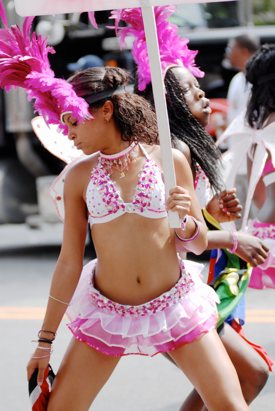
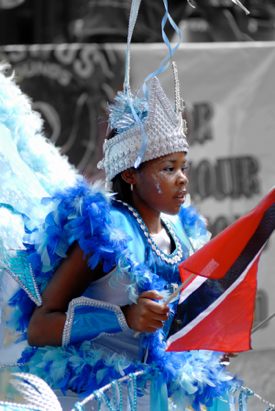
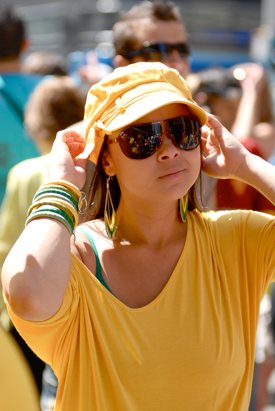
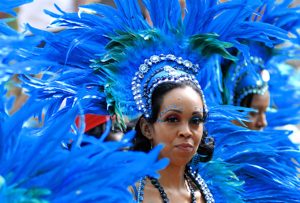
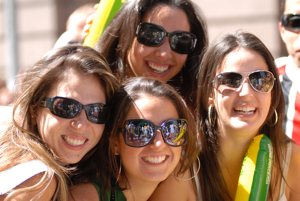
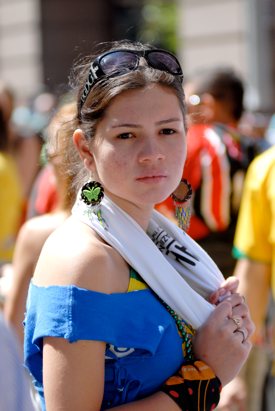
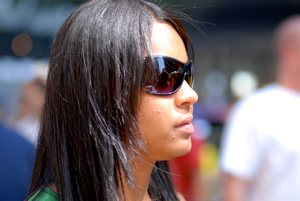
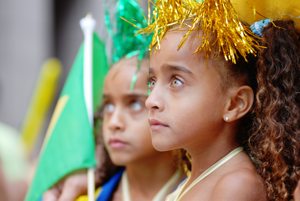
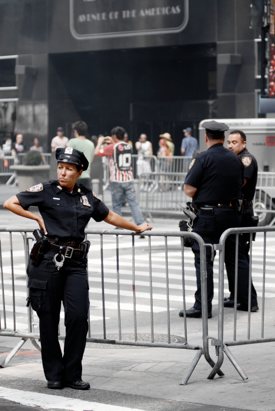
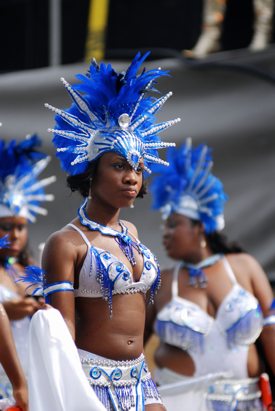
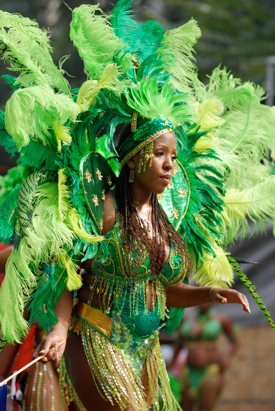
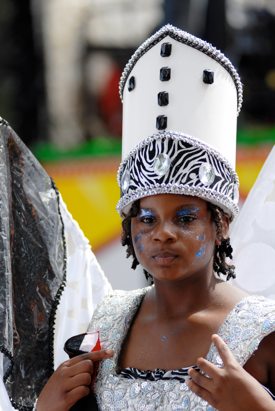
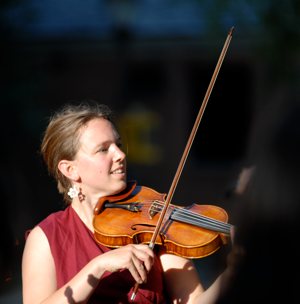
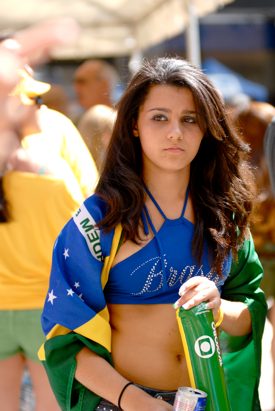
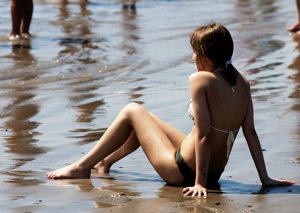
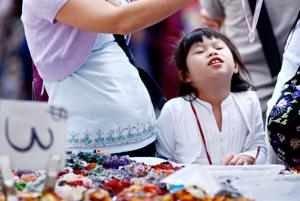
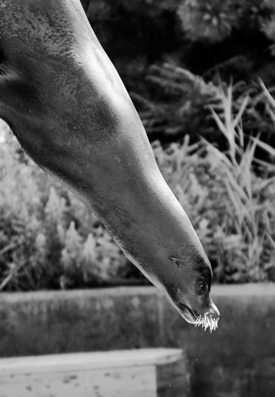
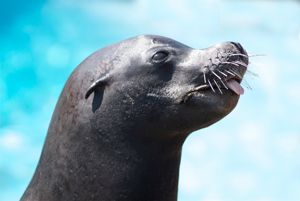
Later Photos (Fashion Week)
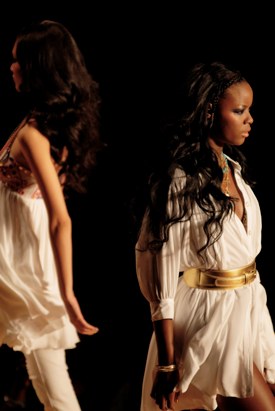
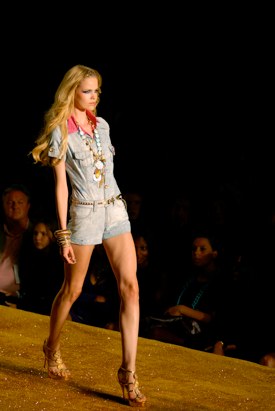
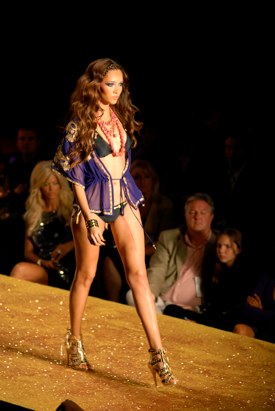
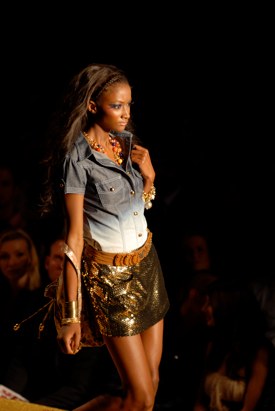
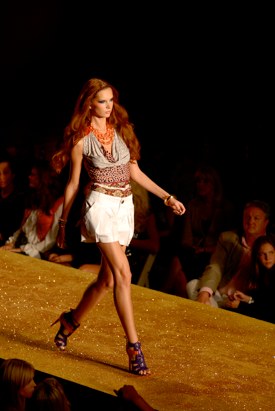
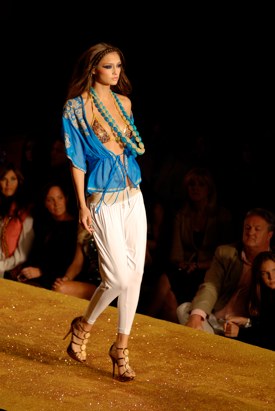
Many of these pictures and a few more originally appeared in my Weekend with the 80–200mm f/2.8 AF D series which included the following posts:
Weekend of Nikon 80–200mm
The Buddha Prince
80–200mm and the NY Aquarium
Brazil Day 2009
West Indian Carnival Parade 2009
The penultimate entry in my weekend with the Nikon 80–200mm f/2.8 AF-D finds me in Brooklyn for the West Indian Carnival Parade. All the photos for tomorrow’s review have now been taken, and my long weekend comes to an end.
The parade was a great time: gorgeous elaborate costumes, beautiful people, and lots of dancing.
Nikon 80–200mm f/2.8 AF-D
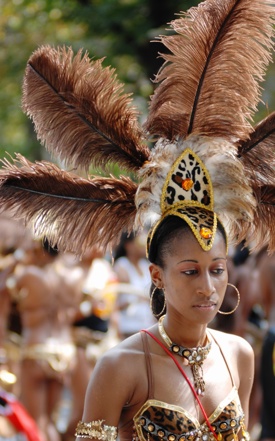
The 80–200mm f/2.8 was a good lens to have, and a popular focal range among others there, I saw both the Canon 70–200mm f/2.8 and 80–200 f/2.8, as well as the Nikon 70–200mm f/2.8 being used by others. It would have, however, been a much better focal length for use on full frame, as 80mm wasn’t quite wide enough. I did do some shooting with it on my FE as well, so I’ll have photos in a couple weeks once I get those rolls developed and scanned.
Nikon 80–200mm f/2.8 AF-D
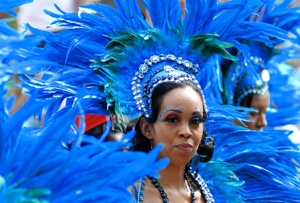
Nikon 80–200mm f/2.8 AF-D
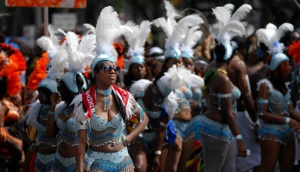
Nikon 80–200mm f/2.8 AF-D
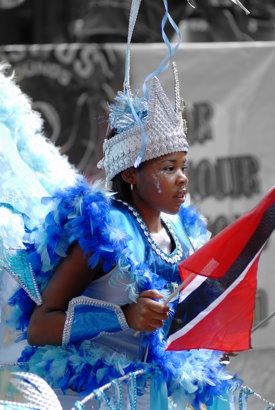
My exclusivity with the 80–200mm f/2.8 came to an end some time around 2pm when I threw on my 24mm f/2 AIS to get pictures of some of the massive costumes. I didn’t make it quite through the full weekend, but close enough.
Nikon 24mm f/2 AI-S
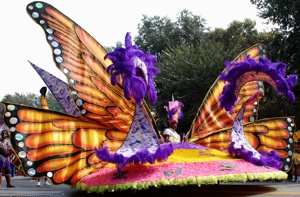
I’ve saved a number of photos from each day to use on the review, so it won’t all be stuff you’ve seen before. Hope you enjoy it!
First, everyone I promised photos to should download this file. I apologize for not having any cards to give out today, and having to deal with pen/paper. If you don't see your picture there, or want a larger version, e-mail me and I'll help you out.
Day 3 of my weekend testing the Nikon 80–200mm f/2.8 AF-D brought me to Brazil Day in midtown. Most New Yorkers are a bit camera shy, but people here seemed to love being in front of the camera — a great change of pace.
Nikon 80–200mm f/2.8 AF-D
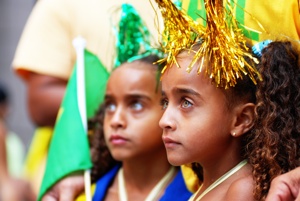
These girls simply have amazing eyes. I’m glad I got in to take their picture, they were surrounded by people who wanted to.
Nikon 80–200mm f/2.8 AF-D
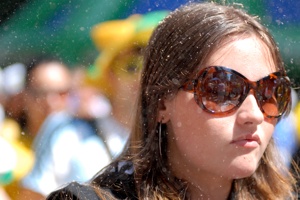
The spray is the very end of a silly string can that didn’t have enough left in it to shoot out string. The girl still wasn’t particularly happy about it, though.
Nikon 80–200mm f/2.8 AF-D
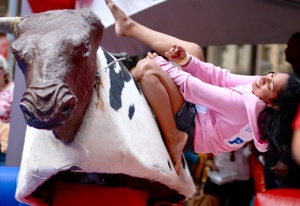
A lot of photographers had the same idea to head to this event today, and I had fun seeing what cameras and lenses everyone was using. While I saw an equal split of Nikon and Canon high-end models, the Canon 5D Mk2 was easily the most common single model I saw. People must really like the 24–105mm f/4 L and 16–35mm f/2.8 lenses, as those were the only ones I saw on Canon bodies.
On the Nikon side of things I saw an F6, several D300s and D3/D3Xs. Surprisingly I didn’t see any D700s, the closest competitor to the 5Dmk2. It seems Canon has hit a sweet spot for customers with a high-megapixel full frame camera at that price point. Nikon should really get on that D700x.
Nikon 80–200mm f/2.8 AF-D
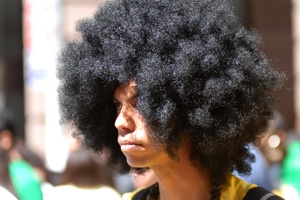
Day 2 of my Nikon 80–200mm f/2.8 AF-D weekend comes with photos from the NY Aquarium. I headed down there this morning due to free tickets courtesy of Bank of America.
Nyaaa — Nikon 80–200mm f/2.8 AF-D
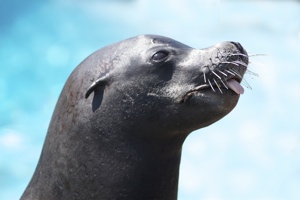
This is the first image I’ve taken with this 80–200mm lens that I can remember seeing chromatic aberration on. It’s not bad at all though, and otherwise the photo is sharp with nice boke. What more could I ask?
Dive — Nikon 80–200mm f/2.8 AF-D
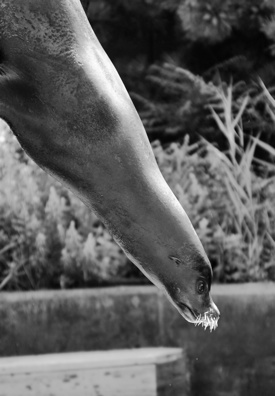
Shots like this are why I shot RAW today rather than my normal jpeg. In the original there wasn’t enough contrast between the sea lion and the background, so it required fairly heavy cuves adjustments. The reason it’s in black and white is the fur texture stands out more this way. It would have worked fine in jpeg, but raw helped. Unless I’m doing a decent amount of post like this, the extra space and reduced buffer capacity just isn’t worth it for RAW for me.
Parachute Jump — Nikon 80–200mm f/2.8 AF-D
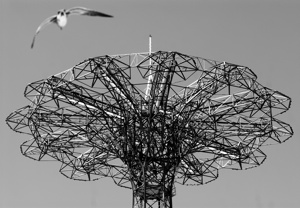
I’m starting out my weekend of 80–200mm with photos from “The Buddha Prince” which I saw in Central Park this evening.
A “walking play”, I was instantly confused and intrigued when I first heard this description earlier today. Surprisingly enough, it is a play that involves walking. Telling the tale of the 14th Dalai Lama, The Buddha Prince has the actors and audience walk from one locale to another through the progression of the events in the his life.
Nikon 80–200mm f/2.8 AF-D
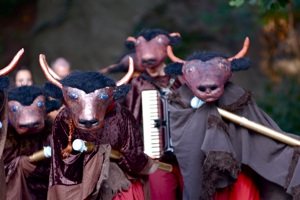
Animal costumes range from yaks to crows, and add some needed ambiance to compensate for the sparse sets.
Nikon 80–200mm f/2.8 AF-D
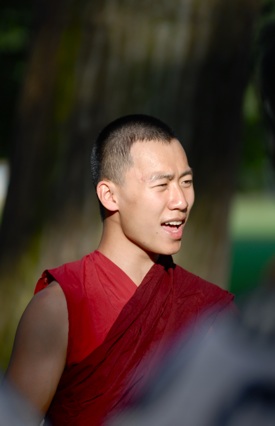
As for the Nikkor 80-200mm F/2.8 AF-D, I’m enjoying it — my only real complaint so far is the need to turn a ring to switch from AF to MF. This is better than flipping a switch in my opinion, but worse than being able to just grab and focus in AF mode, and worse than pulling the focus ring back to switch to MF as on my Tokina 11–16mm.
Nikon 80–200mm f/2.8 AF-D
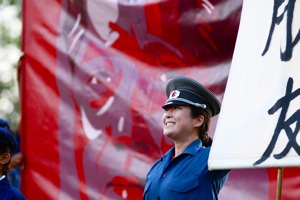
Nikon 80–200mm f/2.8 AF-D
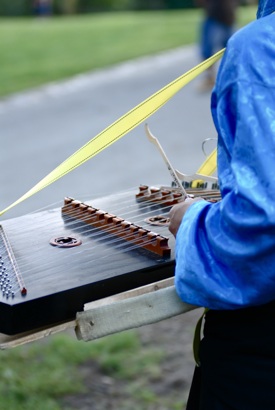
Nikon 80–200mm f/2.8 AF-D
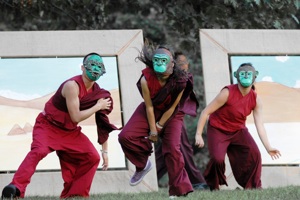
That’s it for now, there will be more photos in my review come Tuesday.
All content © Tai Shimizu unless otherwise indicated.
 Taken with Nikon 85mm f/1.4 AIS
Taken with Nikon 85mm f/1.4 AIS












































